Phuket needs no introduction. Consisting of Phuket island, the largest island in Thailand, and 32 other islands in the Andaman Sea, it has become an international tourist destination. The 2004 tsunami severely damaged the area, but little to no traces of the devastation remain. Our time in Phuket was spent mostly on one beach and touring islands in the nearby Phang Nga Bay.
Patong Beach in Phuket
There are many established beaches on the island of Phuket, especially on the west side. Patong is by far the most popular. Even though we would probably have enjoyed a calmer and more secluded beach, we couldn’t avoid the budget options in Patong. Our island-hopping in the Andaman Sea has progressed from the untouched and unseen to more and more popular and well-known tourist destinations. Patong was definitely as developed and modern as we could expect a beach to be.
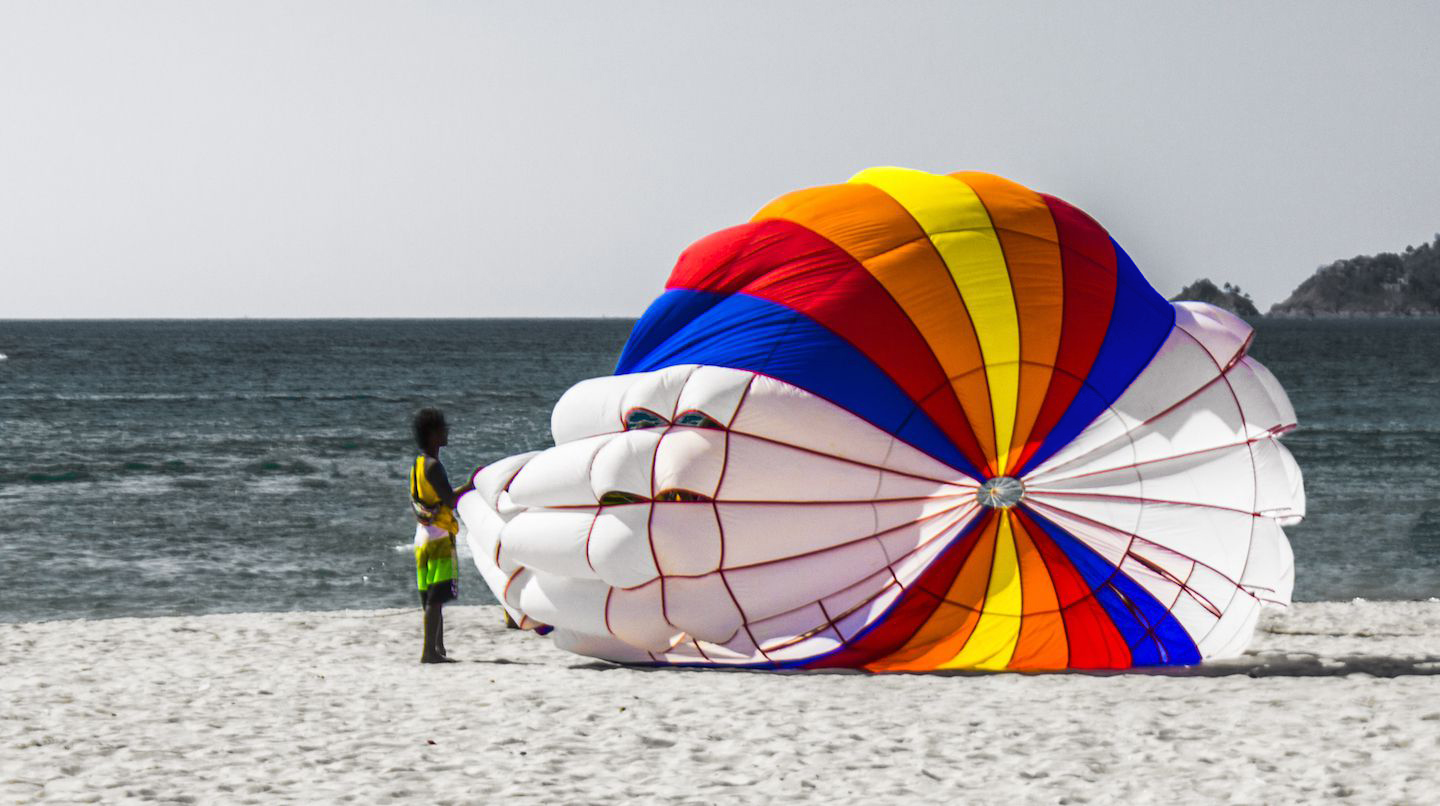
We didn’t spend too much time on the beach itself, but there were lots going on when we did visit. Parasailing was a particularly popular activity. Colourful parachutes pulled by speedboats circled the person in tow around a section of the beach. It looked really cool, except that a guide behind the person in the parachute was not harnessed and simply held on manually – this seemed a bit dangerous but I admired that person’s strength and courage.

The rest of Patong was filled with touristy things, from shopping to nightlife to tons of restaurants. If it weren’t for the narrow hilly roads, Patong could be mistaken for Bangkok or Chiang Mai. Since we’ve spent more than enough time in both of those cities, we looked to the surrounding islands. The Similan Islands were definitely a possibility, but ultimately too pricey. We settled for a tour of the most notable islands in Phang Nga Bay.
James Bond Island (Koh Khao Phing Kan)
Koh Khao Phing Kan is now popularly known as James Bond island due to its feature in the 1974 James Bond movie The Man with the Golden Gun starring Roger Moore and Britt Ekland. This is the second James Bond-featured destination after Ha Long Bay we’ve been to, which was featured in Tomorrow Never Dies. Ironically, I have not seen either of them.
Our tour guide was quick to remind us all about the movie, and how James Bond flew a seaplane into the area. A model of the plane was built by the pier. There were James Bond 007 signs everywhere. The whole thing was a bit cheesy and comedic. It reminded us of how one movie can build an entire tourism industry, just like Maya Bay in Phi Phi.
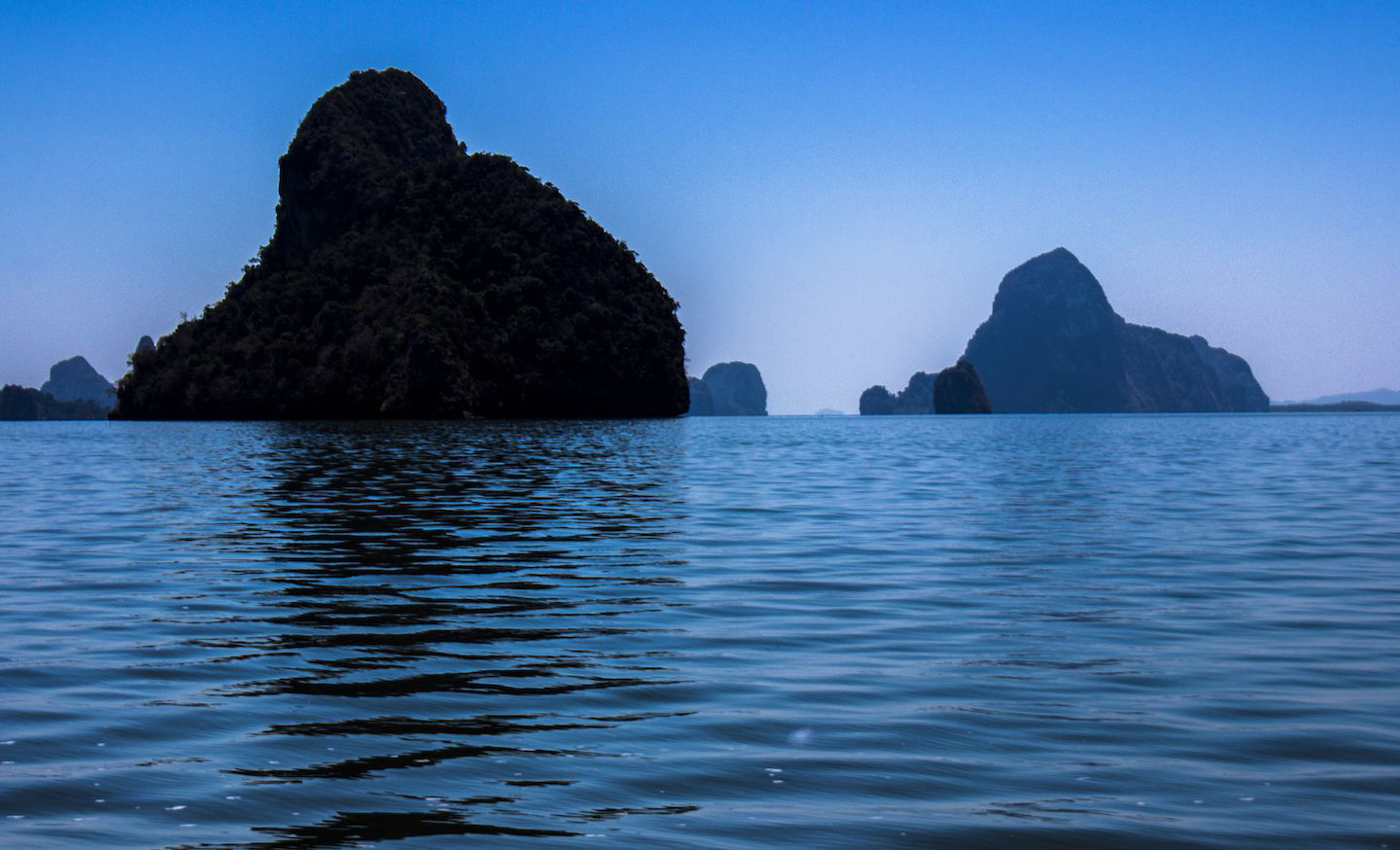
The boat ride to James Bond island via longtail boat was picturesque, though I admit it wasn’t as striking for us having seen similar limestone mountain landscapes already (definite side effect of long-term travel). What made Phang Nga Bay unique were the mangrove tree forests that often covered large sections of the sea. From far away, they looked like carpets of shrubs below the limestone mountains. From up close, the roots were like a giant network of stilts propping themselves above the water. I am continually amazed by the ability of living things to survive in all kinds of environments.
We stepped onto James Bond island into a setup area, filled with souvenirs stalls and all. There was a clearing with a direct view of Koh Tapu, the iconic 20m tall islet featured in the James Bond movie.

Koh Tapu is quite the natural phenomenon, a tiny mountain shooting out of the water. We made sure to take lots of pictures and selfies.
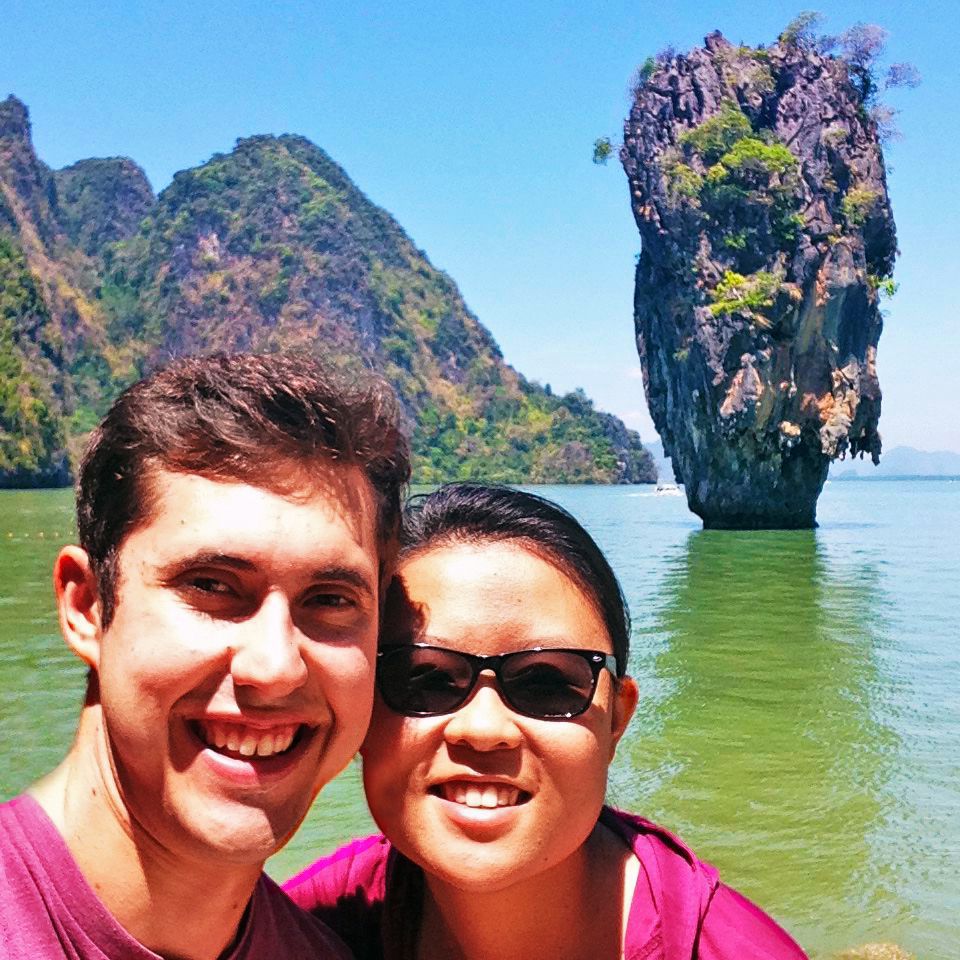
Talu Island
From James Bond island, we headed straight for Talu island, though we never stepped foot on the island itself – we “canoed” all around it. Instead of the individual kayaks that are typical of island and cave exploring, this time there were inflatable rafts that came with a rower.
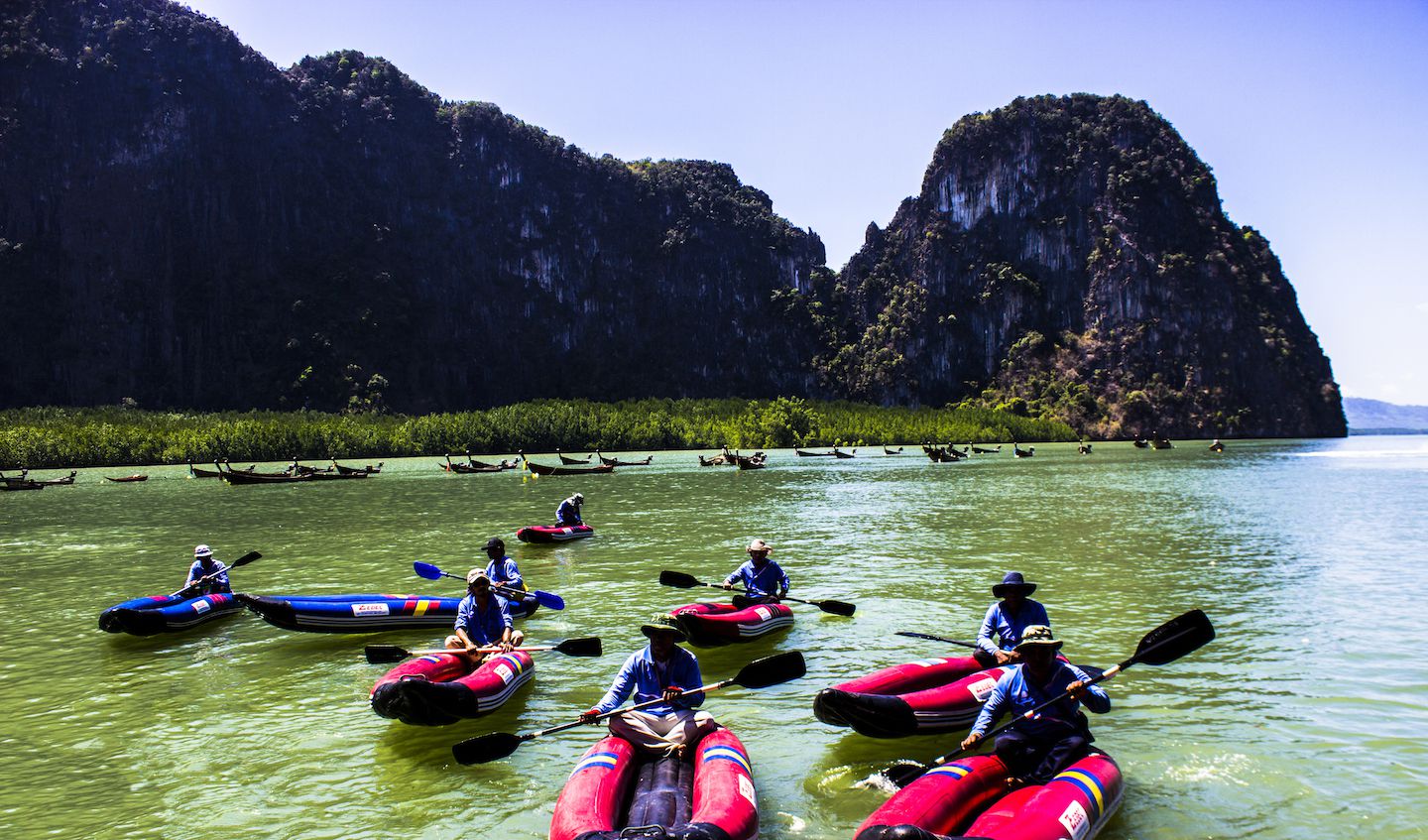
This turned out to be good for two reasons. First, the inflatable rafts were not so big and there were a lot of them around. If tourists had to row their own rafts, it would be a big mess, and people would probably fall overboard. Second, Talu island had a few natural sea caves that opened up to small bays within the mountainous island. The entrances to those sea caves were extremely low – Carlos and I literally had to lie down completely as to not hit our heads.

It was a pretty cool and thrilling experience, though I thought the stalactites on the cave ceiling would legitimately hit us a few times. Of course, our rower was too experienced to let that happen as he expertly maneuvered us in and out of several sea caves. Inside the small bays was very calm and serene as the limestone tower karsts formed impossibly tall walls. I imagine during high tide, the caves would be completely covered and you could be trapped in the bay until low tide.
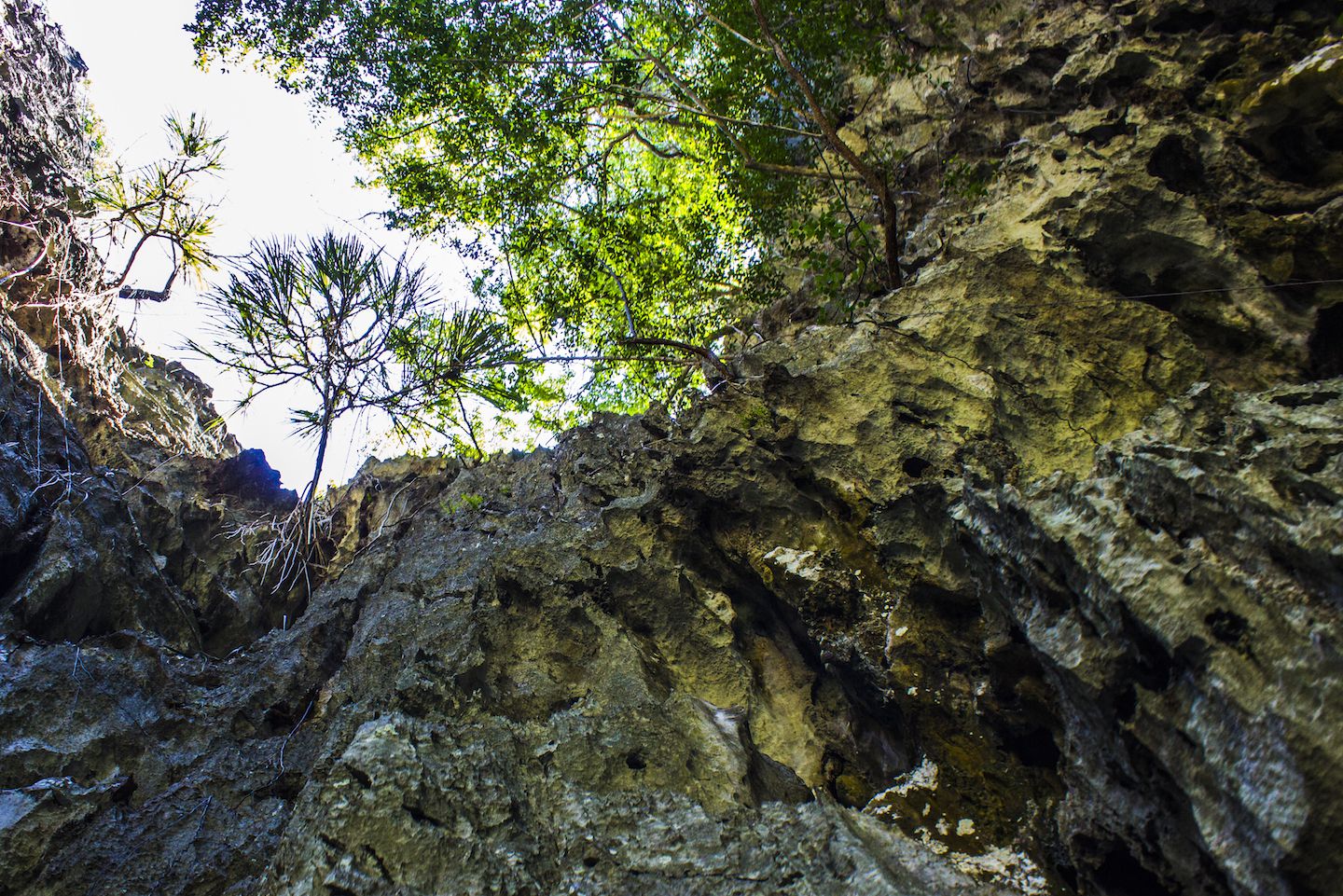
Koh Panyee
Carlos and I knew about Koh Panyee long before we ever came to Thailand. A year or so ago, Carlos showed me a video on the local soccer team (Panyee FC) that was really inspiring. I’m pretty sure I cried the first time I watched the video. It’s a classic underdog story of chasing your dreams and beating the odds and I highly recommend it. We would be lying if we said we wanted to come to Panyee for any other reason.
Koh Panyee is a tiny fishing village built entirely on stilts at the base of a seemingly random limestone mountain island in the middle of the Phang Nga Bay. Originally established by nomadic fisherman, the island is inhabited by Muslims families complete with a mosque.
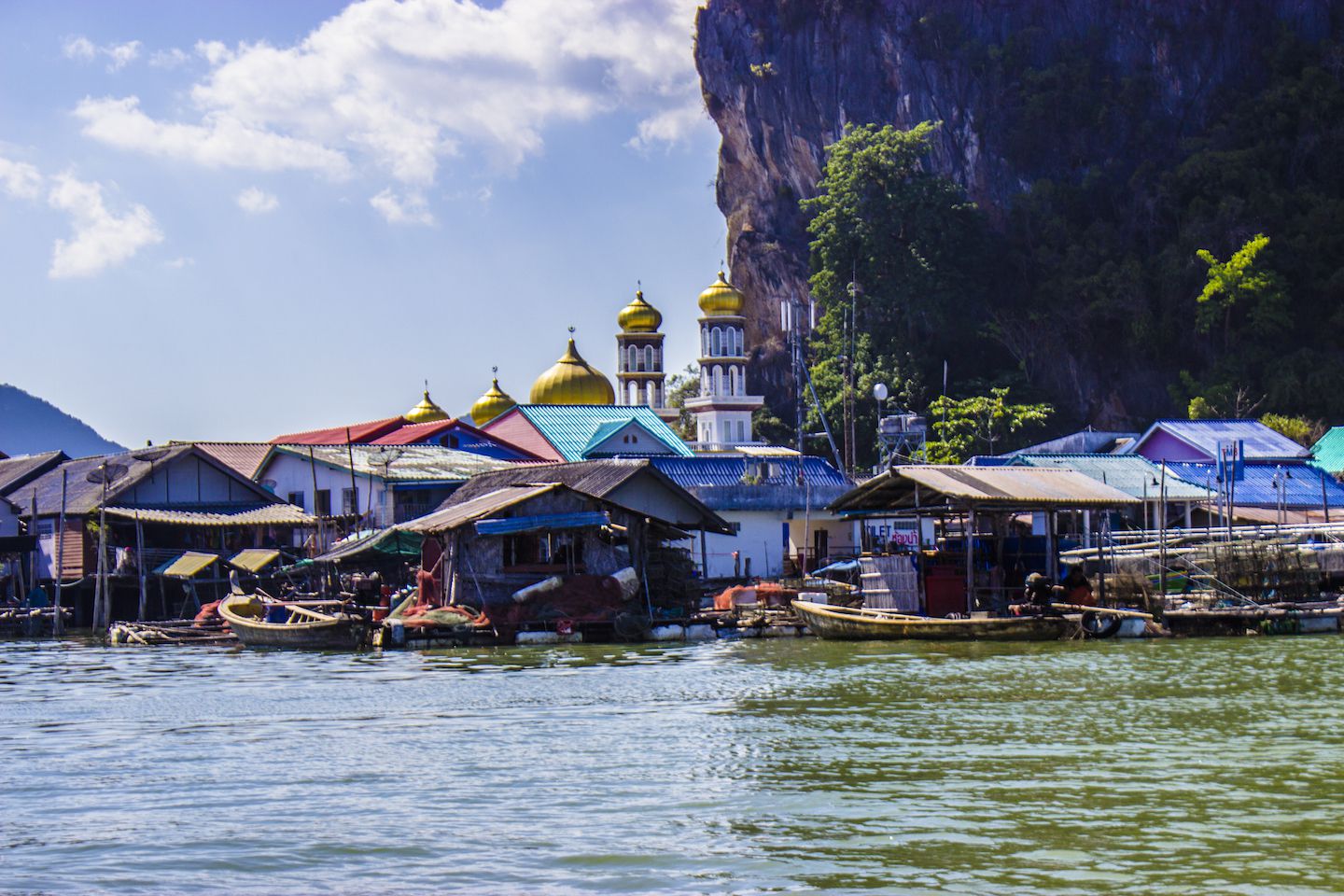
We stopped by for lunch and didn’t have much time to explore the village, even though it is not very big. With what little time we did have, we speedwalked through as much of the village as we could, passing by the mosque and local school and local homes. We made sure to stop by the old wooden soccer pitch on the water, though it’s looking better now. It was really cool to stop by in person at a place we had known about long before this trip, having thought at the time that it was too far away to ever be visited (clearly, dreams do come true).
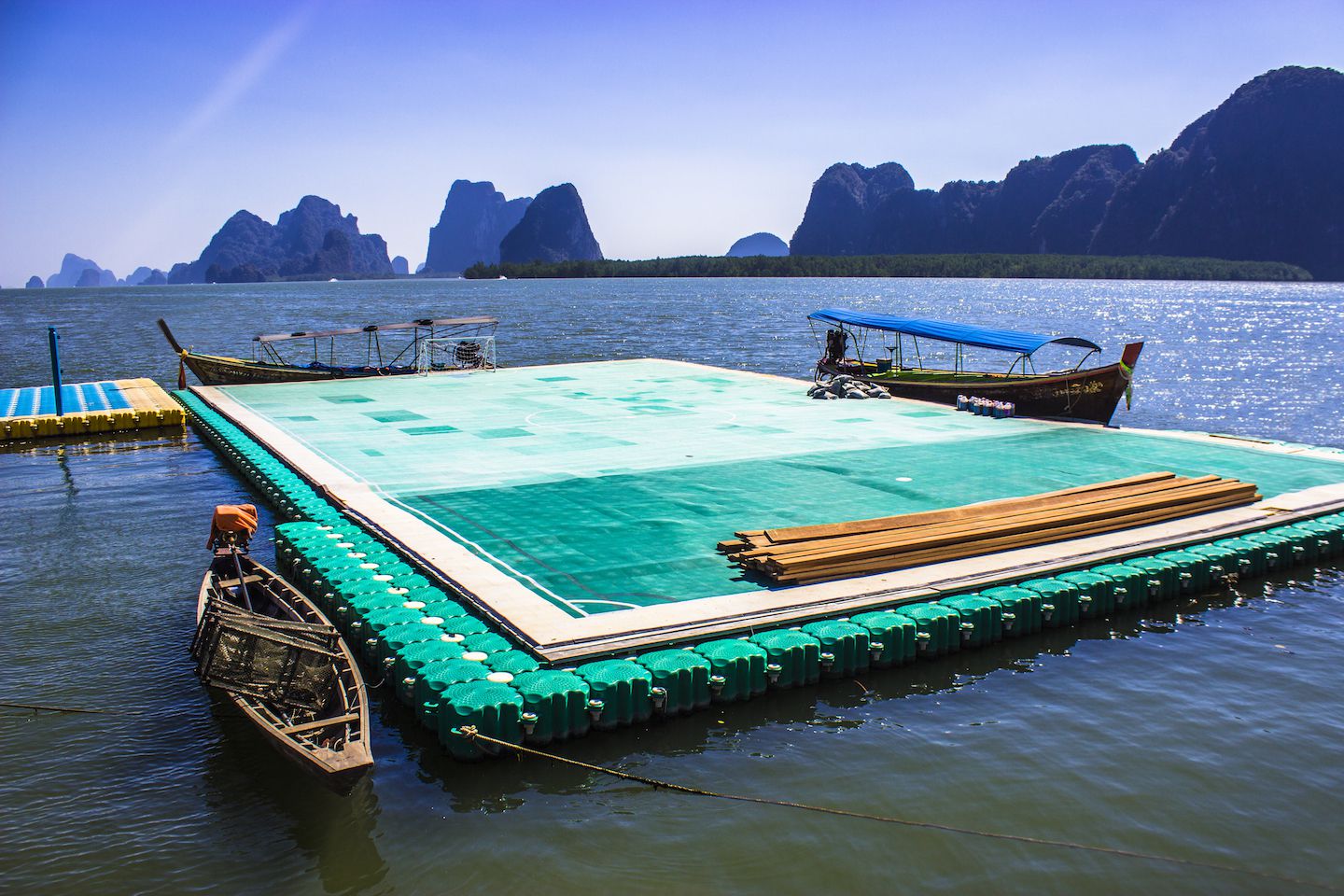
Monkey Cave
This was the part of the tour we were least looking forward to – if we could, we would have skipped it entirely. We have seen too many Buddha statues by now in much more sacred places to have any desire for yet another reclining Buddha in yet another cave built for tourists. So we spent most of our time outside the cave watching the many monkeys.
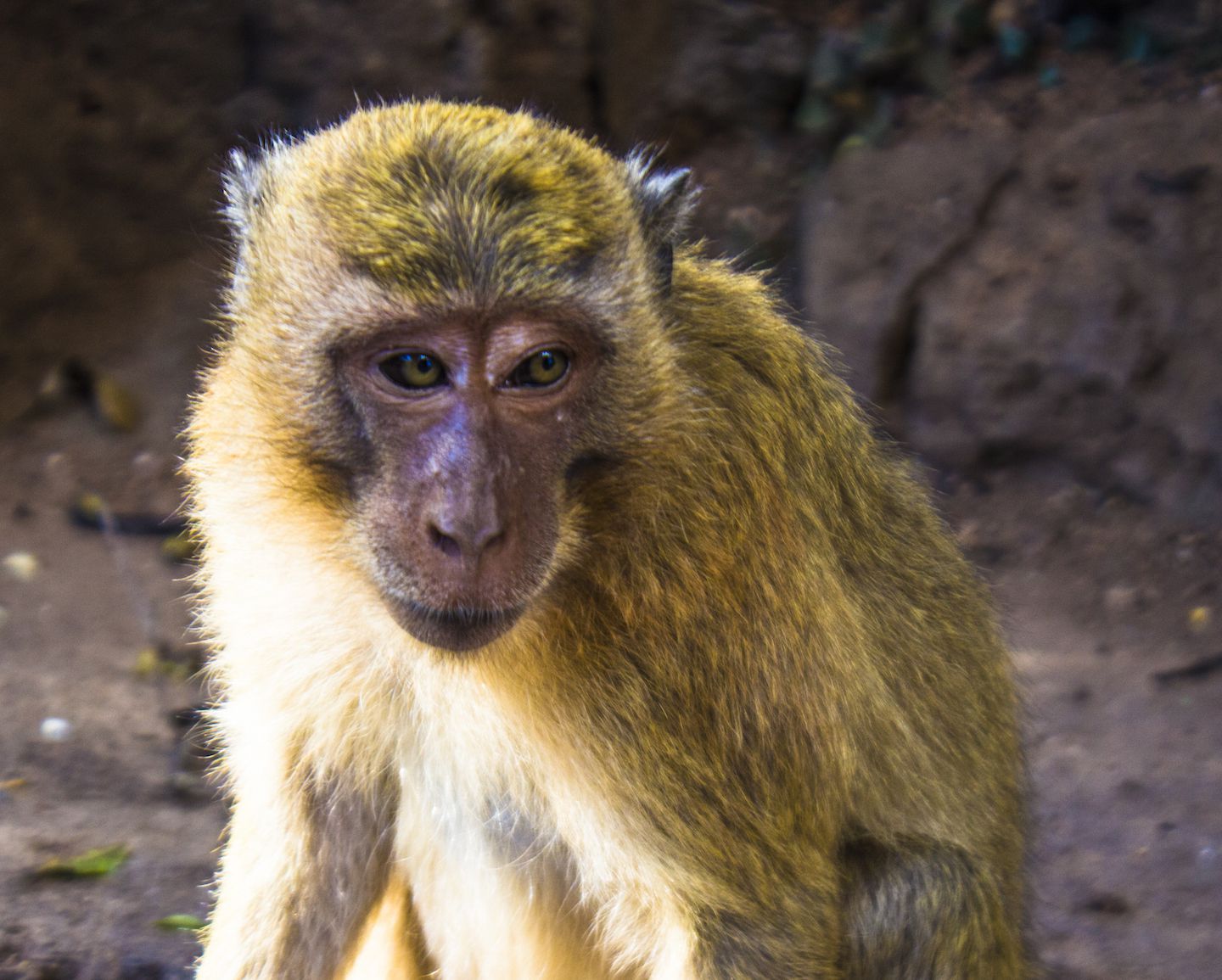
This was definitely the most concentrated group of monkeys we had ever seen, reminiscent of the monkeys in Battambang. With so many gathered in one area, they were very playful, but also possessive and competitive when it came to food. Tourists bought bananas and nuts, but instead of feeding the monkeys, the monkeys often just took the food from scared tourists. They were cute, but they got greedy like humans, hoarding excess bananas for themselves and fighting others for it. It was probably not a good thing that tourist behaviour have resulted in monkeys acting aggressively, but it was the survival of the fittest.
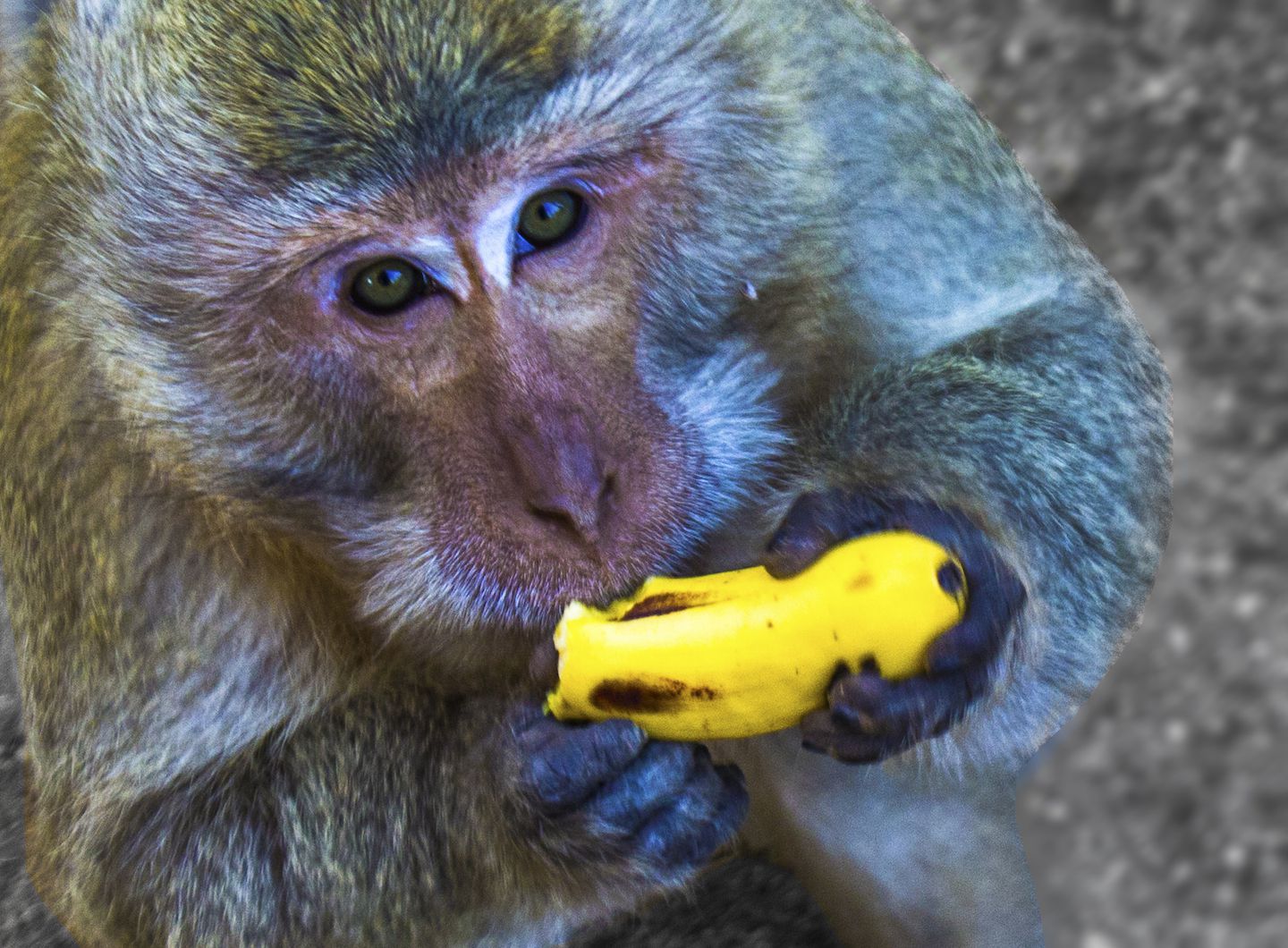
That summed up the most significant moments in Phuket and Phang Nga Bay. As touristy as Phuket can be, we made the most of it and at certain points definitely succumbed to the entirely tourist-oriented places. We’d like to think that we don’t just go for “tourist traps,” but every now and then we can’t avoid a cliche (selfie at James Bond island!). Overall, we had a better time than expected, especially after Phi Phi. After Phuket, we chilled for a few days in Ao Nang Beach in Krabi on the mainland to prepare for the next adventure (Nepal!).
For more pictures from Phuket and Phang Nga Bay, please visit the gallery!

